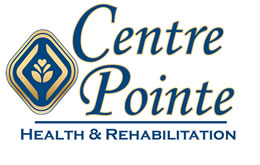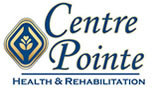House is the place where you feel in control and properly oriented in space and time. It is a safe and foreseeable place. Yet more mishaps occur in our homes than any other location.
For individuals over age 65, house is the most likely place for an injury to occur from a fall. Falling is the single leading cause of home accidents in older grownups.
According to AARP, “Approximately one in four U.S. citizens aged 65 years (or older) report falling each year.” Twenty percent of those falls lead to a serious injury, such as a fracture or head injury. And almost 3 million people end up in hospital emergency clinic as the outcome of a spill.
” If you’re going to age in place in your home, it’s essential to attend to any concerns that could threaten your safety,” states Geoff Fraser, partner of Clear Choice Health Care
To balance out prospective threats and lessen your fall risk, here are six ways to help keep you safe.
” One measure that many people neglect as they address their balance, is the pal system. If you live alone, make sure that somebody is watching out for you,” says Geoff Fraser “Have a relative, pal, or neighbor check in on you when a week by phone or face to face to ensure you’re safe,” states Fraser
2. Practice balance workouts. Workout in general is good for us, but for preventing falls, specific balance exercises strengthen the muscles that support you and keep you upright. “Starting treatment with a professional in balance workouts might be the very best path however talk with a doctor to see if physical treatment is right for you,” says Fraser.
3. Get your vision inspected. It might seem apparent, but bad vision throws off your contrast and depth understanding and your ability to see things clearly. That action that’s right in front of you may be neglected. In particular, presbyopia– the loss of close vision– becomes more common as we age. Also, aging eyes have trouble adjusting to various light conditions.
To make up for any vision modifications, professionals recommend a see to an ophthalmologist for a complete eye examination once every year or 2.
4. Try tai chi. – Tai Chi is a system of Chinese exercises designed to enhance balance, relaxation and health. A review of research studies released in 2017 in the Journal of the American Geriatric Society discovered that over a 1 year period, practicing tai chi minimized the rate of falls by 43%. Research shows that it’s particularly advantageous for fall prevention among seniors since it needs slow movement outside the center of gravity and can challenge postural muscles that keep individuals upright. Strengthening leg muscles in a variety of single leg position presents with a narrow base of support and attempting to accomplish balance on one leg can equip older adults with the ability to recover from a loss of balance. Over time, balance enhances and transitional movement from one workout to the next ends up being more fluid and controlled.
5. Wear the right shoes. “Many older individuals wear uncomfortable shoes, and we understand that uncomfortable shoes are related to foot issues,” says research study lead author Hylton B. Menz of the Lower Extremity and Gait Studies Program in the Australia’s La Trobe University – School of Allied Health.
Menz states standard shoes is too narrow for the public and problem feet with bunions, hammertoes and claw toes will end up being even more delicate when pushing into tight-fitting shoes.
A great deal of shoe shops use advice on footwear, but if you require recommendations on foot mechanics, and how to lower foot discomfort, that’s generally best left to specialists in physical movement.
” A physiotherapist can carry out a foot assessment, analyze how you walk, and assist decrease and manage foot pain,” says Fraser. He adds that analyzing walking patterns provides useful details that can help clients reduce threat of re-injury and pain.
According to Fraser, physical treatment can encourage simple changes in shoes, and possible use of orthotics. Adding and reinforcing flexibility to muscles can bring security and reassuring modifications to one’s mechanics and walking patterns.
Walking barefoot or in socks can have risks, too. A recent study found 52% of participants who fell were barefoot or using slippers or socks. If you wish to avoid falls, wear shoes that fit your foot snugly and that have a low heel and a nonskid sole.
You could do all the above to enhance your safety, however if your balance is “off”– you’re still at high danger for a fall.
As you age, your reflexes are moistened and whatever that contributes to balance can begin to break down. Not only does your vision decreases and offsets your capability to clearly see objects, your muscles weaken.
Compounding concerns like medical conditions (diabetes, thyroid problems, low blood pressure) can prevent balance as well as conditions like Parkinson’s illness and arthritis. Not surprisingly, Foot problems can also take away your sensation of a company structure while you walk.
When you see a growing sense of unsteadiness, your fear of falling rises. It’s ironic, the more scared of falling you are, the more likely you are to fall. “You start preventing all the physical activities you like; your body becomes deconditioned and will take a toll on your balance,” states Fraser.
Geoff Fraser states we need all systems to be in sync for better balance and “treatment can attend to the issues that improve balance.”
Part of the balance system are the inner ear, which house the vestibular system and helps you view your body’s position in space. As your muscles move position to steady yourself, your eyes scan the path for barriers. Any changes in the path are gotten by your nerves, which collect info from your sensory organs and send them to your brain. This will permit you to respond right away to any modifications in your position or environment.
” When your doctor recommends, let’s work together to much better your balance,” says Fraser.






